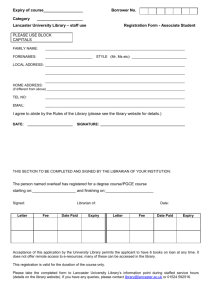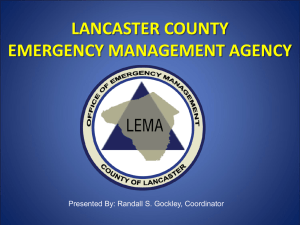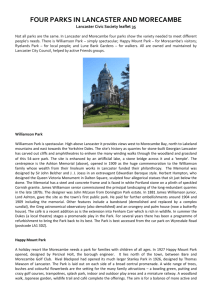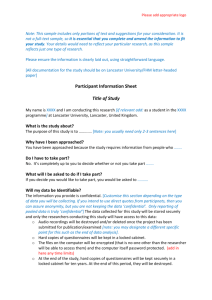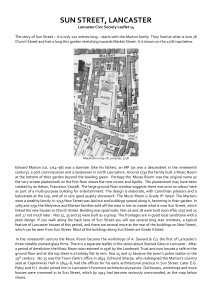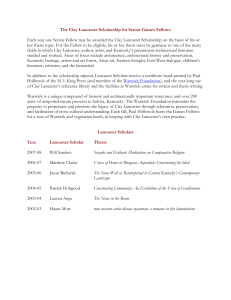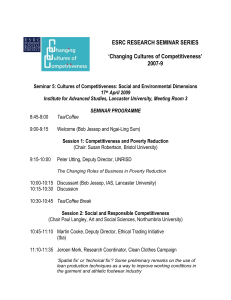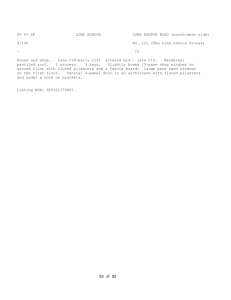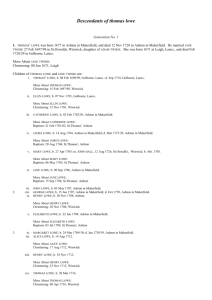Queen Victoria Monument. Lancaster
advertisement
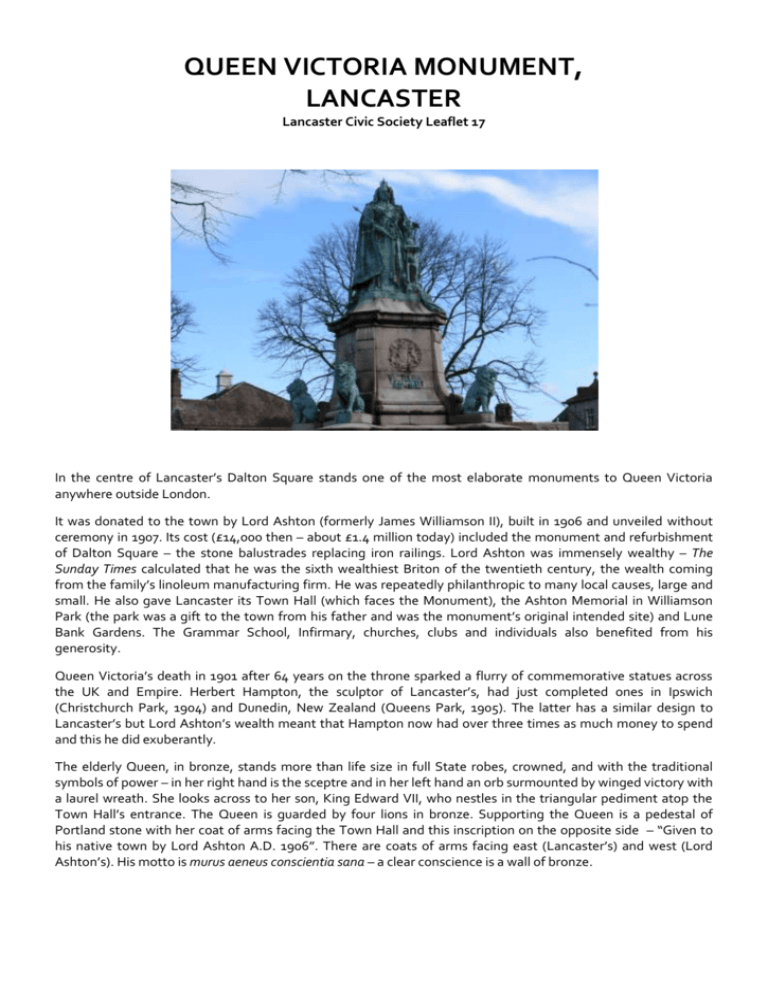
QUEEN VICTORIA MONUMENT, LANCASTER Lancaster Civic Society Leaflet 17 In the centre of Lancaster’s Dalton Square stands one of the most elaborate monuments to Queen Victoria anywhere outside London. It was donated to the town by Lord Ashton (formerly James Williamson II), built in 1906 and unveiled without ceremony in 1907. Its cost (£14,000 then – about £1.4 million today) included the monument and refurbishment of Dalton Square – the stone balustrades replacing iron railings. Lord Ashton was immensely wealthy – The Sunday Times calculated that he was the sixth wealthiest Briton of the twentieth century, the wealth coming from the family’s linoleum manufacturing firm. He was repeatedly philanthropic to many local causes, large and small. He also gave Lancaster its Town Hall (which faces the Monument), the Ashton Memorial in Williamson Park (the park was a gift to the town from his father and was the monument’s original intended site) and Lune Bank Gardens. The Grammar School, Infirmary, churches, clubs and individuals also benefited from his generosity. Queen Victoria’s death in 1901 after 64 years on the throne sparked a flurry of commemorative statues across the UK and Empire. Herbert Hampton, the sculptor of Lancaster’s, had just completed ones in Ipswich (Christchurch Park, 1904) and Dunedin, New Zealand (Queens Park, 1905). The latter has a similar design to Lancaster’s but Lord Ashton’s wealth meant that Hampton now had over three times as much money to spend and this he did exuberantly. The elderly Queen, in bronze, stands more than life size in full State robes, crowned, and with the traditional symbols of power – in her right hand is the sceptre and in her left hand an orb surmounted by winged victory with a laurel wreath. She looks across to her son, King Edward VII, who nestles in the triangular pediment atop the Town Hall’s entrance. The Queen is guarded by four lions in bronze. Supporting the Queen is a pedestal of Portland stone with her coat of arms facing the Town Hall and this inscription on the opposite side – “Given to his native town by Lord Ashton A.D. 1906”. There are coats of arms facing east (Lancaster’s) and west (Lord Ashton’s). His motto is murus aeneus conscientia sana – a clear conscience is a wall of bronze. Below this are four bronze sculptures, one at each corner, representing the high ideals of Justice (with a sword and now-broken scales), Truth (with an open book and lamp), Freedom (a woman looking and pointing heavenward and an eagle (sadly now minus its head)), and Wisdom (with a book, owl, torch, trumpet and staff of Asclepius). Each sculpture has a woman at its centre (the one for Justice is blind), surrounded by putti (angelic baby boys), 26 of them. Hampton also designed more worldly allegorical figures for the Ashton Memorial in Williamson Park – Commerce, Science, Industry and Art. On each of the four sides of the pedestal is a large bas-relief in bronze, showing sculptured images of eminent Victorians, their names carved in the stone above the figures. First, between Truth and Wisdom are the politicians – ten Prime Ministers (like Disraeli and Gladstone) and two radicals (John Bright and Richard Cobden who founded the Anti-Corn Law League). Then, between Wisdom and Justice are a group of eight scientists (Lister, Faraday and Darwin are still well known), an engineer (George Stephenson holding the train Rocket) and five authors (Dickens and Thackeray among them). Between Justice and Freedom are a mixed group of explorers (Franklin of the Arctic, Gordon of Khartoum and Livingstone), inventors (such as Pitman of shorthand and Hill of postage stamps), religious leaders (Booth of the Salvation Army is still remembered), a reformer (Brougham who opposed the slave trade and advocated free trade) and the donor’s father, James Williamson (as exporters, the family firm benefited greatly from free trade). Finally, between Freedom and Truth are the artists, among them Irving the actor, Tennyson the poet, Ruskin the thinker, Sullivan the composer and Turner the painter. Their clothes often represent their status or activities. Lower still, the limestone has been carved into curves to form a bench all round, the whole structure sitting on an octagonal base. Some of the symbolism is clear – regal power, the donor’s philanthropy and the universal need for Truth, Wisdom, Justice and Freedom. Partly the monument is commemorating the achievements and great men of the Victorian age. Only two of the 53 represented are women – Mary Anne Evans (her nom de plume was George Eliot) and Florence Nightingale – three women, of course, if you count the Queen. It is also partly a celebration of Lancaster because five of the eminent Victorians had Lancaster connections – Williamson, Whewell, Frankland, Turner and Owen. Perhaps there was also a sense of a golden age passing and worries about the future and social changes. Many of the names are ‘establishment figures’, yet the number of radicals, reformers and inventors who changed the status quo is high, perhaps a third of them. Lord Ashton was a Liberal MP and a locally controversial character. Directions The Monument is in Dalton Square, off to the left as you drive round Lancaster’s one-way system, southbound. For satnav the postcode is LA1 1PJ. There are several car parks close by. Text and photographs: Gordon Clark. Published by Lancaster Civic Society (©2014). www.lancastercivicsociety.org www.citycoastcountryside.co.uk
